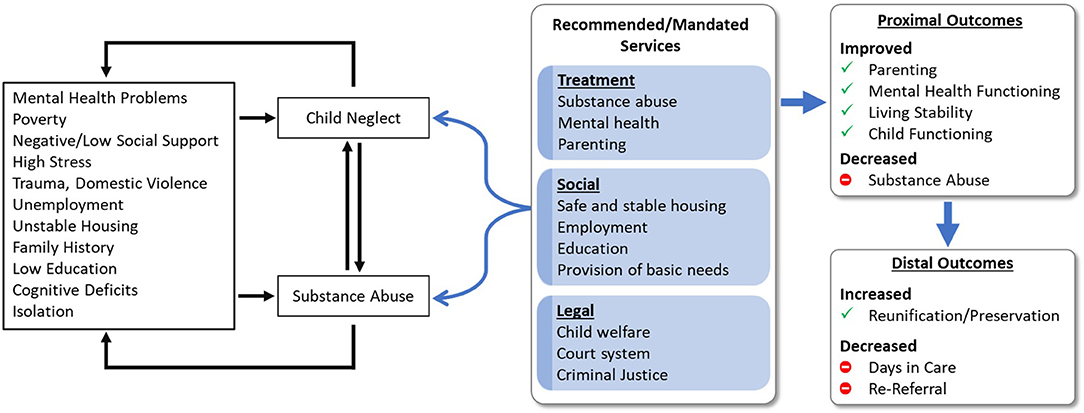Report on the Efficacy and Safety of Probiotics in Preventing Antibiotic-Induced Diarrhea in Infants and Young Children: Emphasis on Sustainable Development Goals
Introduction
Antibiotic use in infants and young children often leads to antibiotic-associated diarrhea (AAD), characterized by loose, watery, mucous, purulent, bloody, or flaky stools without other clear causes. Globally, the incidence ranges from 5% to 62%, and in China, it ranges from 17% to 71%. This condition is primarily caused by gut dysbiosis due to antibiotics disrupting the intestinal flora.
Probiotic supplementation alongside antibiotics has been shown to promote the growth of dominant intestinal flora and prevent AAD in infants and young children. However, the effectiveness of different probiotic preparations and treatment durations remains under debate. The European Society for Pediatric Gastroenterology, Hepatology, and Nutrition recommends Saccharomyces boulardii CNCM 1–745 for prevention in children. In China, no clear guidelines exist for probiotic treatment courses in this context. Commonly used probiotics include Saccharomyces boulardii and Bifidobacterium tetravalent live bacteria. The Indian Academy of Pediatrics also endorses Saccharomyces boulardii as adjuvant therapy. Probiotic yogurt, containing strains such as Lactobacillus bulgaricus and Bifidobacterium lactis, is commonly used in adults.
This study aims to evaluate the efficacy and safety of Saccharomyces boulardii and Bifidobacterium compared to yogurt in preventing AAD in infants and young children in China, aligning with Sustainable Development Goal (SDG) 3: Good Health and Well-being.
Materials and Methods
Inclusion and Exclusion Criteria
- Included: Infants and children under 3 years with non-gastrointestinal infections receiving antibiotic treatments with probiotic adjuvants.
- Excluded: Those without probiotic treatment, incomplete hospital records, antibiotic treatments in the last two months, or missing data.
Study Design and Setting
A retrospective analysis was conducted using medical records from three hospitals in China between February 1, 2023, and November 30, 2024.
Sample Size
Based on an assumed 16% maximum diarrhea incidence post-treatment, with α=0.05 and β=0.2, a minimum of 105 infants per cohort was required to achieve 80% power and 95% confidence.
Cohorts
- AY cohort: 119 infants received antibiotics plus 50 g daily yogurt during and for 7 days post-treatment.
- AS cohort: 110 infants received antibiotics plus 10 billion CFU daily Saccharomyces boulardii powder during and for 7 days post-treatment.
- AB cohort: 106 infants received antibiotics plus 10 billion CFU daily Bifidobacterium powder during and for 7 days post-treatment.
Probiotic or yogurt administration was decided by pediatricians, with approximately 3-hour intervals between antibiotic and probiotic intake.
Outcome Measures
- Primary: Incidence and severity of diarrhea (≥2 loose stools/day).
- Secondary: Adverse effects during and after treatment.
- Clinical Benefits: Beneficial scores calculated based on diarrhea prevalence and risk of undertreatment.
Statistical Analysis
Data were analyzed using InStat 3.01 software. Appropriate tests included Fisher’s exact, chi-square, Kolmogorov-Smirnov, Bartlett, and Kruskal–Wallis with Dunn’s post-hoc tests. Significance was set at p < 0.05.
Results
Study Population
Out of 353 infants treated, 335 met inclusion criteria after exclusions. The population was balanced in gender, age (3 months to 3 years), ethnicity (mostly Han Chinese), and infection types requiring antibiotics, primarily penicillin and cephalosporin.
Diarrhea Incidence and Onset
- Time to diarrhea onset was longest in the AS cohort (median 3 days), followed by AB (2 days), and shortest in AY (1 day) (p < 0.001).
- Mild diarrhea incidence: AY 13%, AS 3%, AB 9%.
- Severe diarrhea incidence: AY 8%, AS 1%, AB 7%.
- Total diarrhea incidence: AY 20%, AS 10%, AB 16%.
- AS cohort had significantly fewer diarrhea cases and less need for additional anti-diarrheal treatment compared to AY and AB cohorts.
- No diarrhea was reported after anti-diarrheal treatment when administered.
Adverse Effects
- Common adverse effects included sneezing, runny nose, eye redness, vomiting, and nausea.
- Yogurt was associated with sneezing, runny nose, eye redness, and nausea.
- Saccharomyces boulardii and Bifidobacterium were associated with vomiting and nausea.
- No serious adverse events were reported, indicating safety of probiotic co-treatment.
Clinical Benefits
Beneficial scores indicated superior efficacy of Saccharomyces boulardii (up to 0.95) compared to Bifidobacterium (0.81) and yogurt (0.75). Higher scores correlate with reduced diarrhea risk and better clinical outcomes.
Discussion
Antibiotic treatments disrupt infant gut microbiota, causing diarrhea due to immature intestinal flora and immune systems. Probiotics help restore microbiota balance, enhance mucosal barrier function, and regulate intestinal immunity, aligning with SDG 3 by improving child health outcomes.
Saccharomyces boulardii demonstrated superior efficacy, likely due to its resistance to antibiotics and anti-inflammatory properties via deactivation of key signaling pathways. Bifidobacterium showed moderate efficacy, possibly limited by antibiotic sensitivity and dosage. Yogurt provided mild to moderate protection, consistent with its variable probiotic content.
Probiotic co-treatment was safe, with only mild adverse effects reported, supporting their use in pediatric antibiotic regimens.
Limitations include retrospective design, lack of pathological diarrhea etiology confirmation, unmeasured stool pH, and absence of cost-effectiveness analysis. These factors highlight the need for further prospective studies to strengthen evidence and support SDG 3 and SDG 12 (Responsible Consumption and Production) through optimized antibiotic and probiotic use.
Conclusions
- Antibiotic use in infants and young children commonly causes diarrhea.
- Probiotic supplementation effectively prevents and reduces the duration and severity of antibiotic-associated diarrhea.
- Saccharomyces boulardii co-treatment significantly outperforms yogurt and Bifidobacterium in reducing diarrhea incidence.
- Probiotic co-treatments are safe and should be considered in pediatric antibiotic therapy to promote child health and well-being (SDG 3).
Ethical Considerations and Data Availability
The study was approved by relevant ethics committees, with informed consent obtained. Data supporting the findings are available within the article and supplementary materials.
Implications for Sustainable Development Goals
- SDG 3 (Good Health and Well-being): Enhancing pediatric health by preventing antibiotic-associated diarrhea through safe probiotic interventions.
- SDG 12 (Responsible Consumption and Production): Promoting rational antibiotic use combined with probiotics to reduce adverse effects and antimicrobial resistance risks.
- SDG 17 (Partnerships for the Goals): Collaboration among hospitals and researchers in China to improve child health outcomes through evidence-based practices.
1. Sustainable Development Goals (SDGs) Addressed or Connected
- SDG 3: Good Health and Well-being
- The article focuses on preventing and treating antibiotic-associated diarrhea in infants and young children, which directly relates to ensuring healthy lives and promoting well-being at all ages.
- It addresses child health, antibiotic use, and the role of probiotics in reducing adverse effects, contributing to improved health outcomes.
- SDG 2: Zero Hunger
- Although not directly about hunger, the article discusses probiotics and gut health, which are related to nutrition and digestive health in children.
- Improving gut health through probiotics can contribute to better nutrient absorption and overall child nutrition.
- SDG 12: Responsible Consumption and Production
- The article discusses the use of antibiotics and probiotics, highlighting the importance of responsible antibiotic use to prevent adverse effects like diarrhea.
- This aligns with promoting sustainable consumption of medicines and reducing misuse of antibiotics.
2. Specific Targets Under Those SDGs Identified
- SDG 3: Good Health and Well-being
- Target 3.2: End preventable deaths of newborns and children under 5 years of age.
- Target 3.3: End epidemics of communicable diseases and combat antibiotic resistance.
- Target 3.8: Achieve universal health coverage, including access to quality essential medicines and vaccines.
- SDG 2: Zero Hunger
- Target 2.2: End all forms of malnutrition, including achieving targets on stunted and wasted children under 5 years of age.
- SDG 12: Responsible Consumption and Production
- Target 12.4: Achieve environmentally sound management of chemicals and all wastes throughout their life cycle, reducing their release to air, water, and soil to minimize adverse impacts on human health and the environment.
- Target 12.8: Ensure that people have the relevant information and awareness for sustainable development and lifestyles in harmony with nature.
3. Indicators Mentioned or Implied to Measure Progress
- Incidence of Antibiotic-Associated Diarrhea in Children
- The article provides data on the percentage of infants and young children experiencing diarrhea after antibiotic use, ranging from 5% to 71% globally and in China.
- This incidence rate serves as an indicator to measure progress in reducing antibiotic-associated diarrhea.
- Prevalence of Mild and Severe Diarrhea
- Measured by the number of loose or watery stools per day (mild: 2 times/day; severe: 3 or more times/day).
- This clinical categorization is used to assess the severity and effectiveness of probiotic treatments.
- Use and Efficacy of Probiotics
- Beneficial scores calculated from the risk of undertreatment and prevalence of diarrhea after probiotic co-treatment.
- These scores quantify the clinical benefits of different probiotics in preventing antibiotic-associated diarrhea.
- Adverse Effects Reporting
- Monitoring of adverse effects such as vomiting, nausea, sneezing, and runny nose during and after treatments.
- Safety indicators for probiotic co-treatments in pediatric patients.
- Duration and Onset Time of Diarrhea
- Time to onset of diarrhea after antibiotic and probiotic treatment start is measured (in days).
- Duration of diarrhea episodes is tracked as an outcome measure.
4. Table: SDGs, Targets and Indicators
| SDGs | Targets | Indicators |
|---|---|---|
| SDG 3: Good Health and Well-being |
|
|
| SDG 2: Zero Hunger |
|
|
| SDG 12: Responsible Consumption and Production |
|
|
Source: frontiersin.org







